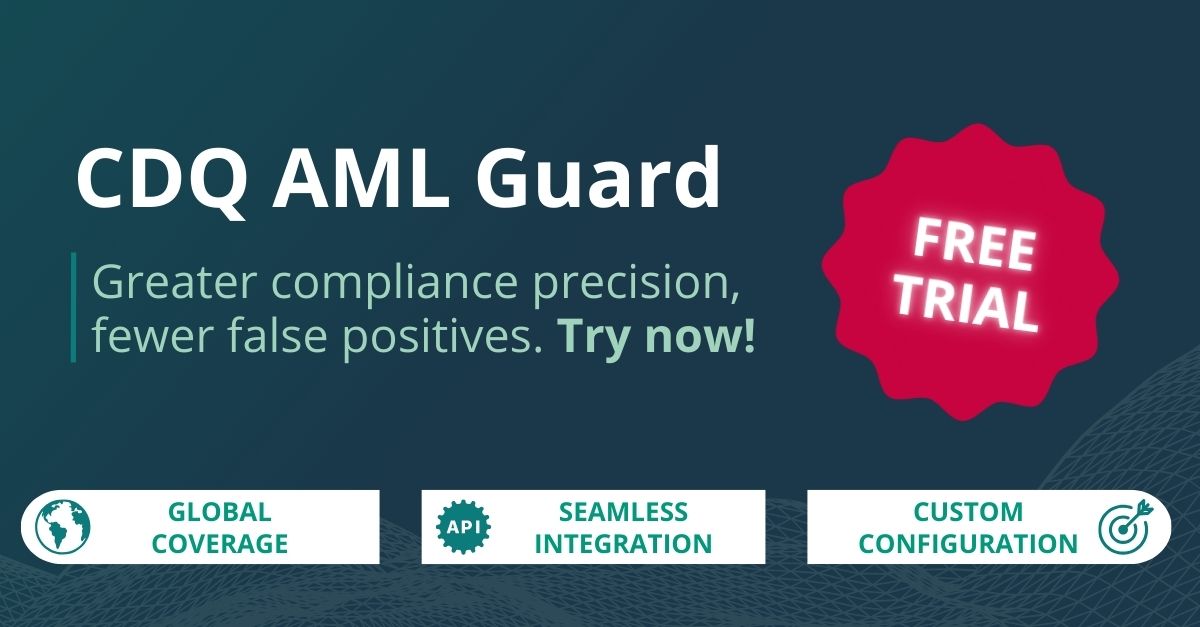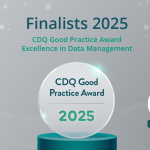A practical guide to managing regulatory compliance in business partner relationships

Regulatory compliance is complex and evolving. Not much of a surprise to anyone in today’s global business environment. Governments and international bodies continuously update sanctions lists, watchlists, and anti-money laundering regulations, and the increasing pressure on companies to stay vigilant can be can be tough to keep up with. The ongoing rollout of new sanctions, such as the EU’s 18th package nearing finalization, is a clear reminder of how quickly the rules can shift, turning yesterday’s green light into today’s red flag.
If you manage business partner data, you know the stakes are high. One mistake can damage your company’s reputation and trust, with consequences going far beyond financial loss. Compliance teams serve as crucial internal safeguards: spotting risks early, navigating shifting sanctions, and helping the company stay on course to meet revenue and growth goals.
And the good news is that the responsibility of protecting operations from hidden risks embedded in your list of existing business partners doesn't have to be overwhelming at all. With the right knowledge and tools, you can build compliance into your everyday business with less hassle and more confidence.
Let’s break down the essential elements of compliance in business partner relationships and how to build resilience into your processes.
Quick navigation
- General Compliance
- Sanctions and Watchlists
- Compliance Monitoring
- Risk-Based Approach
- Compliance Done Right
General Compliance
What is regulatory compliance, and why is it important?
Simply put, regulatory compliance means doing business the right way: following laws and regulations designed to prevent financial crime, protect markets, and promote trust. It helps avoid penalties, protects your reputation, and mitigates risks such as engaging with sanctioned entities or facilitating illegal activities like money laundering.
And let’s be clear: it’s a continuous journey, not a one-time project. The goal is that you’re not just meeting obligations but are actively managing risks that could otherwise catch you off guard (and at tremendous cost). But are you there yet?
Who needs to conduct compliance checks?
Financial institutions are the obvious players, but regulations now reach far beyond banking. In fact, any company handling high-value transactions, working cross-border, or falling under EU directives like AMLD5 must perform compliance screenings. Even B2B retailers or manufacturers might hit compliance thresholds (e.g. €10,000+ cash transactions in the EU).
And let’s just underline that regulators are expanding their scope all the time. Staying ahead means building flexible compliance processes that scale with your business and regulatory changes.
What is the risk of not conducting compliance checks?
The penalties are real and painful: fines can reach 10% of your annual turnover, responsible managers may face jail, and the company might even be forced to close. Beyond legal trouble, there’s operational chaos, loss of trust, and long-term damage to your brand.
Even worse, non-compliance leaves your business vulnerable to fraud, money laundering, and unwittingly supporting illegal activities. Brutal truth is that companies who neglect compliance often only realize the depth of their risk when it’s too late.
Read more about examples of companies facing serious challenges in maintaining AML standards due to poor management of business partners.
Sanctions and Watchlists
What are sanctions lists, and who issues them?
Sanctions lists are official blacklists created by governments and international organizations like the United Nations, European Union, or the US Treasury’s OFAC. These lists identify individuals, companies, and countries with whom transactions are restricted or completely banned to prevent illegal activities and promote global security.
These lists, however, evolve constantly, reflecting geopolitical shifts and emerging risks. And missing an update can mean a critical compliance gap.
What lists does CDQ AML Guard support?
CDQ AML Guard covers all the critical lists: sanctions, watchlists, PEP (Politically Exposed Persons), and adverse media screening. This means you’re not just checking boxes but looking at comprehensive risk indicators.
And if you’re thinking about a very specific regulatory requirement in your organization right now, that’s great. Not just because you care, but also because that’s exactly what CDQ AML Guard offers. You can customize the screening configuration based on your exact organization’s regulatory requirements and aligned with your risk appetite.
How often should lists be updated?
The best practice? Continuous, real-time updates that promptly reflect the latest regulatory changes. Due to their evolving nature, relying on manual or periodic list updates is an invitation to risk, and it’s simply not effective.
That’s exactly why CDQ AML Guard syncs updates in real time, ensuring your checks are always based on the latest data and closing gaps before they become exposures.
Read more about the role of real-time data management
Compliance Monitoring
Why is continuous monitoring essential?
Compliance isn’t static. A business partner’s risk profile can change overnight — new sanctions, adverse news, ownership changes. Regulations like AMLD5 explicitly require ongoing monitoring. Regulations evolve, risk profiles shift, and what seemed safe last week, might suddenly change. Not exactly a surprise you’d appreciate, right?
Plus, regulations like AMLD5 mandate ongoing monitoring to quickly identify changes in business partner statuses, sanctions lists, or regulatory requirements. Continuous monitoring gives a strategic advantage. When you catch a risk early, you’re able to prevent it from snowballing into a costly crisis.
How does CDQ AML Guard support monitoring?
CDQ AML Guard tracks changes in business partner data stored in the Data Mirror and compliance lists. It whenever updates occur, automatically triggers screenings. If a partner’s status changes or a new hit appears on a list, it automatically triggers screening and creates a case for your team, so you can act fast and minimize exposure.

Risk-Based Approach
What is a risk-based approach to compliance?
Not all partners carry the same level of risk. A risk-based approach means applying more resources to higher-risk partners while keeping checks lighter for low-risk ones. High-risk partners undergo enhanced checks, while low-risk partners require less frequent monitoring, optimizing resource use.
How does CDQ AML Guard enable this?
CDQ AML Guard allows you to categorize business partners into risk levels and create tailored screening configurations for each group. These configurations can include different lists, thresholds, and screening frequencies. This flexible setup aligns compliance efforts with actual risk exposure, and keeps the regulators satisfied without wasting time.
Examples of risk levels and their screening configurations:
- High-Risk Partners: Comprehensive checks with global and industry-specific sanctions lists and frequent screenings.
- Medium-Risk Partners: Standard sanctions lists with periodic reviews.
- Low-Risk Partners: Basic sanctions lists with minimal monitoring.
What happens when a compliance hit is identified?
The moment CDQ AML Guard spots a potential match, it instantly creates a case with detailed info: which list flagged the partner, match confidence scores, and all relevant partner data. Cases are routed to the appropriate teams for evaluation. This centralizes your compliance tasks and ensures no alert slips through.
How are cases resolved in CDQ AML Guard?
Cases can be resolved through the case management workflow. Users can approve valid hits, reject false positives, or reopen closed cases if new information arises. Every action is recorded to keep your audit trail clean and complete.
Can I track past decisions on compliance hits?
Yes, AML Guard provides a full audit trail that captures all actions and decisions, including timestamps, decision types, and reasons. This ensures transparency and accountability, critical for regulators and internal governance.
How can I configure compliance settings in CDQ AML Guard?
You can choose which lists to monitor, what types of checks to run, and set your matching threshold. The recommended threshold is 75–80% to balance identifying sanctioned parties with minimizing false positives.
What is the matching threshold in compliance screening?
The matching threshold determines how strict the system is in flagging compliance matches. A lower threshold will identify more matches (and more false positives), while a higher threshold will reduce false positives but may miss some real hits. Defining the right setting requires experience and can be adjusted per risk group.
Can I integrate CDQ AML Guard with other systems?
Absolutely. It’s designed to plug right into your current workflows through APIs. You can link compliance checks directly to your business processes.
By automating screenings, triggering cases automatically, and integrating with your workflows, CDQ AML Guard dramatically cuts down the tedious manual work compliance teams typically face. Automated screenings and case generation save hours and catch risks faster than manual methods.
Read more about streamlined, automated approach to compliance monitoring
Compliance doesn’t have to hold you back
Most companies don't fall short on compliance because they don’t care. But, on the flip side – neither do regulators care about your internal hurdles or tech debt. They care about your exposure.
If you’re now thinking there might be cracks in your current setup, you’re not alone and that’s actually a good thing. The first step to fixing a gap is recognizing it. Compliance is complex, but it doesn’t have to be overwhelming or paralyzing. And you don’t need a 10-person team or a massive IT investment to do it right.
What you need is better data, clearer workflows, and automation that scales. That’s exactly what we built CDQ AML Guard for. Prioritizing real-time monitoring, risk-based focus, and automation can transform your compliance from source of anxiety into a competitive advantage.
Ready to see compliance done differently?
Whether you want a quick walkthrough or a tailored use case, we’re happy to help.
Get in touch and make compliance one less thing to worry about!

Get our e-mail!
Related blogs
Turning compliance challenges into manageable workflows
The world of compliance is a fast-moving, complex landscape, and for many teams, staying ahead of regulations (e.g. AMLD5) feels like an endless game of catch…
Navigating the compliance maze: why real-time monitoring is essential
In today’s interconnected business environment, regulatory compliance is no longer optional. It’s a core component of operational integrity. Organizations must…
CDQ AML Guard: How-to Guide
In the complex landscape of business transactions, enterprises face the critical challenge of screening business partners against sanctions and watchlists while…






